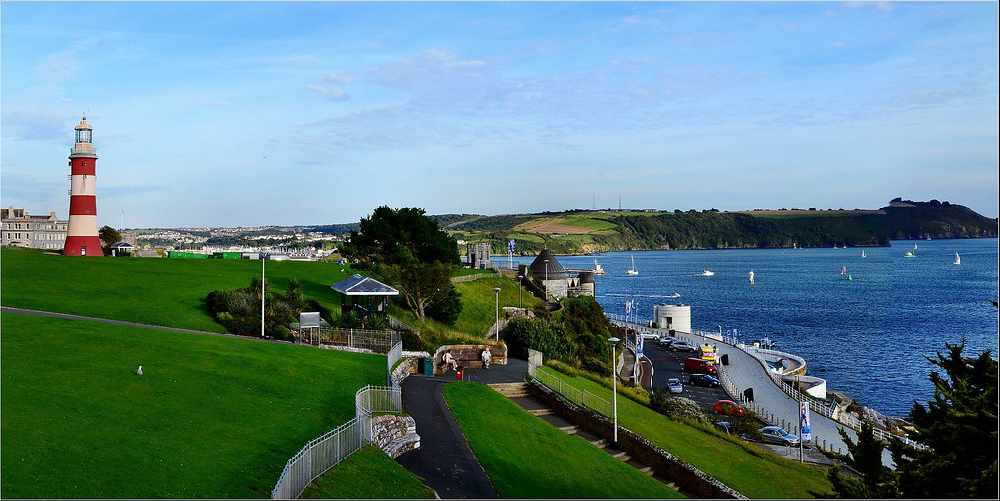
It's been suggested by consultants employed by Exeter City Council
Consultants Lacey Hickie Caley had been tasked by Exeter City Council to draw up a set of Urban Design Proposals for South Street, with a traffic order to ban vehicles in core daytime hours presenting the largest catalyst for further schemes.
Exeter City Council’s place scrutiny committee has unanimously supported the proposals, subject to consultation and budget availability.
Michael Carson, City Surveyor, said that the recommendation an incremental approach to redevelop of the area but doesn’t commit the council to any specific scheme, but one of the early intervention schemes would be removing traffic from North Street and South Streets during daylight hours.
He added: “South Street is an important part of the city. The street needs to create its own identity and clarify its function, and can potentially act as an important link between the city centre and Exeter Quayside.
“It would be appropriate to incorporate the suggested proposals for South Street and the surrounding areas of the wider West Quarter into any revision of the city centre strategy.
“The proposals identify “Early Interventions” which can be explored first, potentially as a catalyst to further improvement, and many of these interventions will require cooperation and support from Devon County Council as a Highway Authority. They are enthusiastic to get on with them as soon as possible, and we will start working on these interventions as soon as we can.”
The early interventions include:
- Early implantation of traffic order to remove private vehicular traffic from North Street and South Streets during daylight hours
- A new cycle lane
- Close off a number of on-street parking bays
- Work with the BID and traders to organise a South Street festival
- Removal of unnecessary street furniture/ clutter, selective tree clearance, widening of pedestrian/cycle bridge, Improved cycle signage
- pop-up cafes and kiosks
The report added: “Exeter City Council has identified the importance of South Street and the surrounding area as a key part of the city centre and the interface between the High Street, Cathedral Quarter, West Quarter and Quay.
“The vision is to make South Street will become an exciting destination to live, work and socialise. It will form a key part of the West Quarter with a high quality and attractive pedestrian focused environment and improved links with the Quayside and Cathedral Yard.
“Through the consultation process one of the main issues raised by stakeholders related to the high amounts of vehicle traffic using South Street, which has led to a vehicle dominated environment.
“Early discussions with Devon County Council Highways Authority have established support in principle for the following changes Implementation of a time restriction for vehicle access during the hours of 9-6pm. This would require restrictions to the one-way system on both North Street and South Street.
“It is considered that the removal of vehicle traffic during the core daytime trading hour of 9 -6pm would have a profound effect upon the usage of the streetscape, allowing flexible and safer pedestrian flows.”
Long term improvements for the South Street area include creating a new flexible public square at Carfax Square the top of South Street, improvements to the Subways and re-opening the Kalenderhay link to forge improved pedestrian link between South Street and Cathedral Yard, the report adds.
The short term and easy win projects, the report adds, offer an opportunity for early interventions, which would result in a marked improvement to the urban environment, improve connectivity and footfall and generate both momentum and support for further projects and enhancements.
Cllr Luke Sills, chairman of the committee, said: “It is a very exciting report and we look forward to seeing the developments to come forward in recent years.”
Mr Carson told him that once approved by the executive, the council would start working on the early interventions as soon as possible.
The report and recommendations will now go to the council’s executive in October to be adopted.
 Calls for inclusion on Plymouth lord mayor role
Calls for inclusion on Plymouth lord mayor role
 Upgrades to Plymouth storm overflows to take place
Upgrades to Plymouth storm overflows to take place
 Dartmoor finances facing biggest cut for years
Dartmoor finances facing biggest cut for years
 Rare curlews and martens are leaving Dartmoor - for now
Rare curlews and martens are leaving Dartmoor - for now
 Dartmoor phone mast gets the go-ahead
Dartmoor phone mast gets the go-ahead
 Livestock processing plant refused at Shebbear
Livestock processing plant refused at Shebbear
